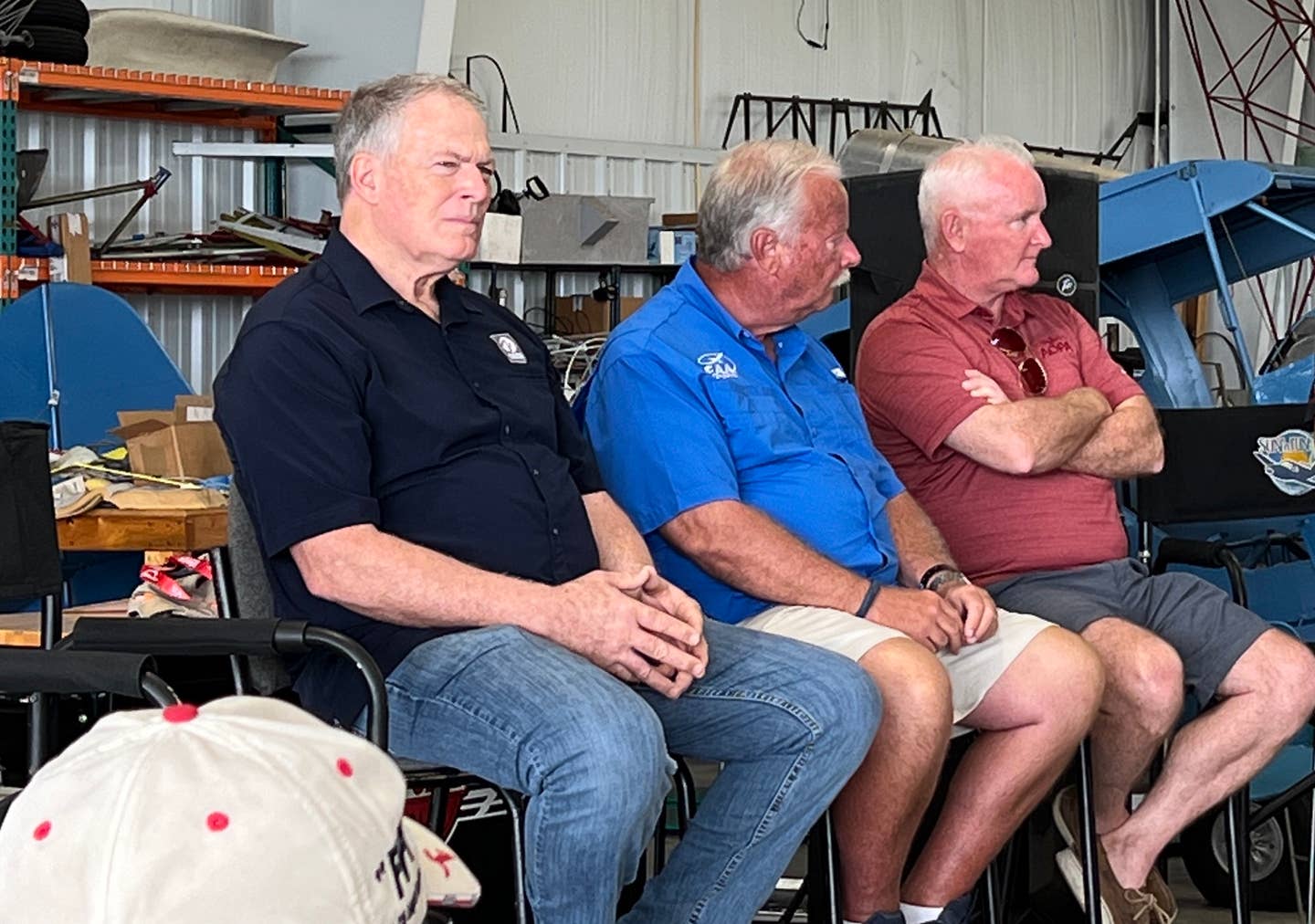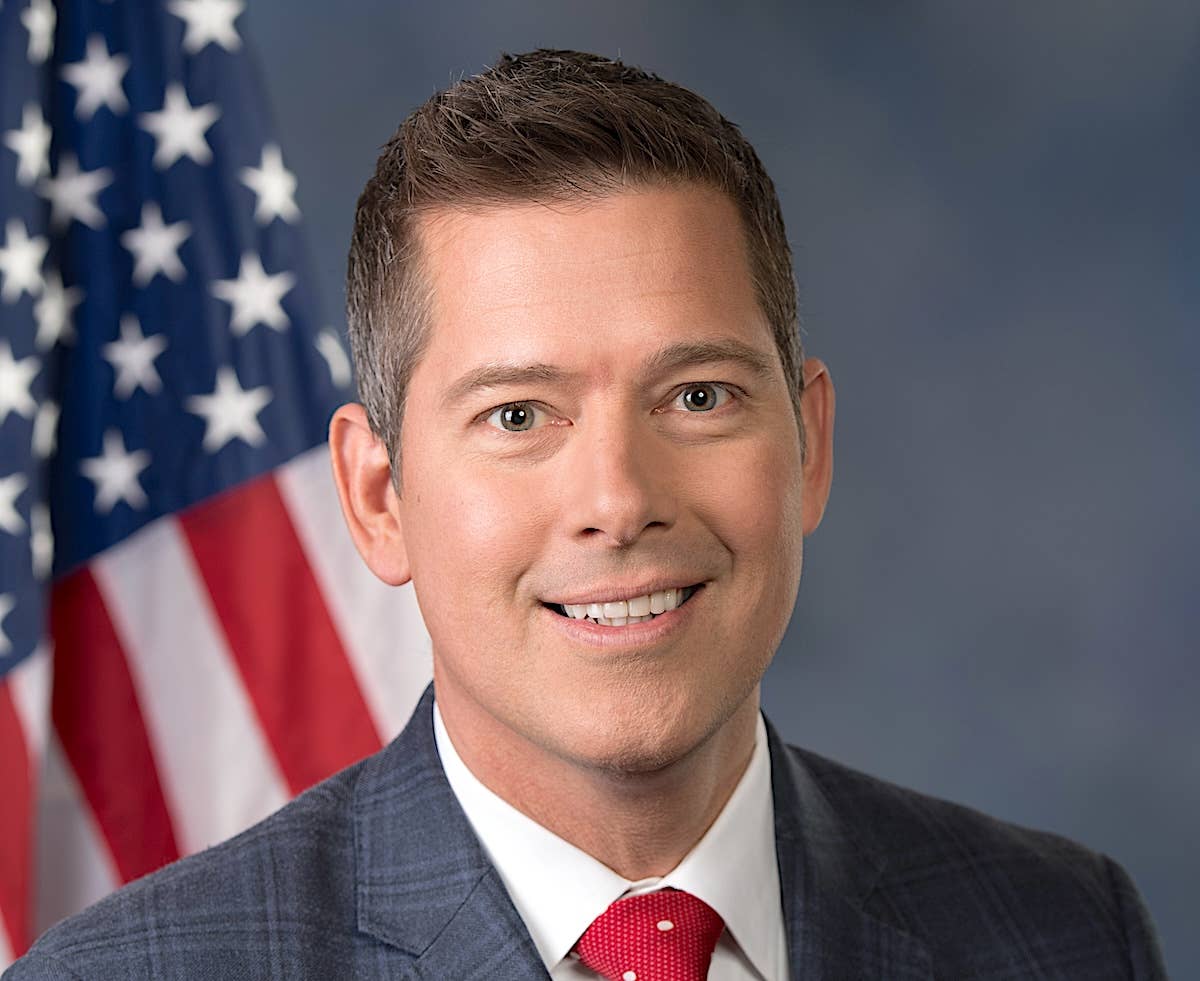GAMI Should Be Allowed To Sink Or Swim On Its Own
EAGLE is supposed to support the development of high octane unleaded fuels. But it’s doing its best to stymy the success of one that already exists.

Pete Bunce, GAMA; Jack Pelton, EAA; and Mark Baker, AOPA, address the press at a Town Hall of unleaded avgas.
Early in the week at AirVenture, GAMA’s Pete Bunce declared that the market would determine which of multiple unleaded avgas products would ultimately prevail. What he failed to mention is that GAMA, the other alphabets and the EAGLE industry consortium have been hell bent on keeping their thumb on the invisible hand’s scale. And they’re not reticent to use federal law to do it.
To summarize this for you, the just-passed House FAA Reauthorization bill requires any unleaded fuel intended to replace 100LL at an airport to have both FAA approval and an industry consensus standard which, essentially, means an ASTM spec. General Aviation Modifications Inc.’s G100UL is FAA approved (via STC) but does not have an industry consensus standard. The industry consensus standard language was inserted into the bill at the request of AOPA and the other alphabets.
Why? Via email, I asked AOPA’s Mark Baker. He replied that California Rep. Jay Obernolte explained it in this interview we published earlier this week. Rep. Obernolte said that requiring pilots to purchase an STC for fuel usage could be a problem and that’s why the industry consensus standard language was inserted. In reality, these two things have nothing to do with each other. The STC is the FAA approval process and required by law. The consensus standard is not statutory and is simply an industry tradition that confers no particular benefit to the consumer. Because GAMI lacks the ASTM approval, the language has the effect of targeting G100UL for exclusion.
Would it matter if the language weren’t there? It would because that would allow GAMI to begin fielding G100UL to airports that want it using the same tankage. It could then live or die in the market, just as Bunce was claiming would happen. Even at that, GAMI would face an uphill struggle to gain market share because G100UL will be more expensive than 100LL and suppliers of the latter have pricing power. They have enough margin to lower the price further, enlarging the pump price delta in 100LL’s favor and protecting their market. Irrespective of the buyer’s moral sentiment about lead as a health hazard or its benefits in cleaner running engines, they would be afforded an actual choice. That’s how a free market is supposed to work. EAGLE is simply denying the choice in favor of protecting the status quo under color of procedure.
And they’re doing it by inserting a lot of noise. One is the claim that without an ASTM spec, we don’t know what’s in the fuel. But this is broadly revealed in GAMI’s patents to the same extent that it’s revealed in D910, the ASTM spec for leaded avgas. And don’t buy the argument that an ASTM spec somehow allows all comers to make a fuel, thus guarding against monopoly status by GAMI or any other company. Refiners make all kinds of ASTM-spec products under license from other patent holders. This is business as usual in the petrochemical industry. If Phillips/Afton or Lyondell/VP Racing get qualified fuels through PAFI and then the ASTM standards process, they may very well be protected by patents that require licensing. If only one makes it, isn’t that a monopoly?
As for the STC, well, point taken. As Obernolte said, you do have to buy it, but the larger point is that the STC approval is the least elegant solution from the consumer’s point of view. The competing solution through PAFI—if it works—would approve fuels through so-called fleet authorization. Think of it as a Papal Decree. Through statute, the Congress authorizes the administrator to set up a testing program, funds it, then confers the authority to declare the fuel suitable for fleet-wide use. PAFI is the chosen instrument for testing. GAMI chose not to participate in PAFI because it deemed the process cumbersome, chaotic, slow and unlikely to yield results. The original version of PAFI operated between 2014 and 2018, spent $30 to $40 million and was cumbersome, chaotic and slow. It yielded no results worthy of the definition. EAGLE is betting that PAFI V2.0 will get it done. But unknown is the precise regulatory path for fleet approval. By regulation, fuel changes are considered major alternations. Does that mean Form 337s will be required?
Also unknown is how risky the fleet authorization bet is. We don’t have enough information about the candidate fuels or PAFI’s operations to judge its progress. The stakes are high because if these two fuels crater, as the previous two did, or they’re not applicable to the entire fleet, we’ll be two or four years further down the road with no solution and the very industry EAGLE is supposed to support will be holding the bag. So will aircraft owners who could be confronting the regulatory sunset of leaded fuel with no solution in sight. And that very industry, or at least elements of it, may be upping the ante. Paul Millner, who spent a career in the avgas business, told me he attended Lycoming’s fuel presentation at AirVenture where a representative told the audience that leaded avgas would be around for another 15 years and Lycoming wasn’t inclined to invest in testing its replacement. Status quo, in other words.
This represents a sea change in how these companies spin public opinion in their favor. If nothing else, it is refreshingly honest about what may be EAGLE’s internal thinking. Give public lip service to the pious commitment to get lead out of the environment, but do everything possible to delay it as long as possible. Lycoming’s previous general manager, Michael Kraft, was almost evangelical about fielding high-octane unleaded fuel. For several years, his view was that the industry needed to stay ahead of the issue or else regulators would control the timing. He also argued that selling unleaded fuel as a cleaner running alternative would be the best way to lever it into the market, rather than hammering away at the health effects. His was a plaintive voice in the wilderness rarely espoused from the current vested interests.
Where to from here? EAGLE/FAA seems to give the impression that it’s dancing cheek to cheek with the EPA and regulation of lead isn’t urgent, despite the fact that an endangerment finding has been issued. I don’t have a feel for this, but in any case a wind shift in politics could render it moot if an activist administration elevates elimination of lead to a national cause. Environmental groups such as Friends of the Earth and Center for Environmental Health may force the issue in the courts, and CEH already has a consent decree whereby 23 California airports agree to sell the lowest lead aviation fuel that’s “commercially available in sufficient quantity.” G100UL isn’t available in sufficient quantity yet and EAGLE is doing its level best to make sure it won’t be.
Ideally, in the market-driven world GAMA’s Bunce imagines, the consensus standard language would be absent from the reauthorization bill and GAMI could begin to develop a market in California and the West using the single tankage most airports have. G100UL will cost more than 100LL, but we don’t know exactly how much more. It would be up to the FBOs to decide if they want to convert their 100LL tanks to G100UL and up to customers to decide if they want to buy the STC and buy the fuel. Buy it or don’t buy it. That’s how a free market works. There probably won’t be harmonious acceptance, but that’s equally true of any fuels coming out of PAFI. The transition from 100LL to something else will be turbulent no matter what fuels are involved. In my view, EAGLE should stop trying to deny GAMI the opportunity to sink or swim on its own.
As for the industry consensus requirement, it’s just more noise. I had always figured ASTM was about 60 percent politics, 40 percent technical. “More like 80 percent politics,” Paul Millner told me. Small companies like GAMI are at a distinct disadvantage because as Millner describes it, the ASTM process is horse trading. Big oil companies, the very ones who would vote on giving G100UL an approved spec, have interests to protect and horses to trade. Small companies don’t. Millner describes the process as a buzz saw and GAMI may have little choice but to try it, if only to silence the braying about an ASTM spec assuring us of the fuel’s composition. In following the STC process in the first place and declining to seek an ASTM spec, GAMI went against the grain. It’s paying the price. I’m beginning to think GAMI ought to sell G100UL to a major and let them bash it through ASTM.
I have little doubt that if GAMI did achieve the consensus standard, EAGLE would create some other barrier or objection to G100UL’s deployment. We shouldn’t forget that EAGLE’s “stakeholders” include current avgas producers and the oil industry broadly. Avgas is a small market, but it’s profitable, and companies selling it will do all they can to protect that market. Another thing not to forget, if you even knew, is that the 2018 Reauthorization bill (before EAGLE existed) had language prohibiting using an STC for fuel approvals. At the last minute, since-retired Sen. James Inhofe removed it.
And thus politics intrudes constantly in ways favorable to vested interests, but counter to sound public policy.






